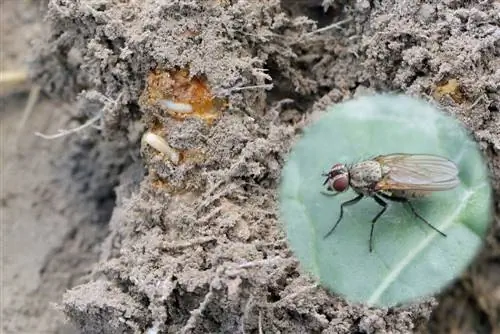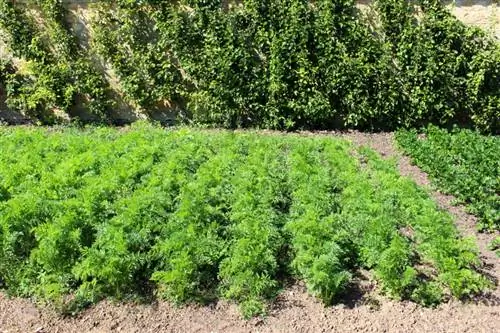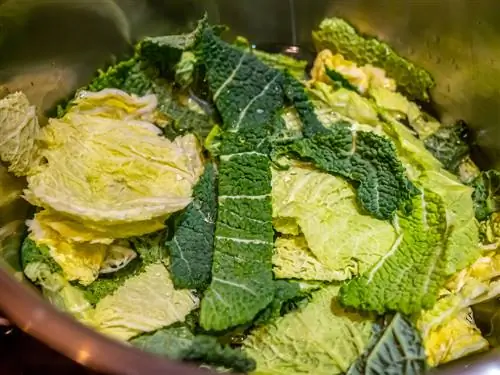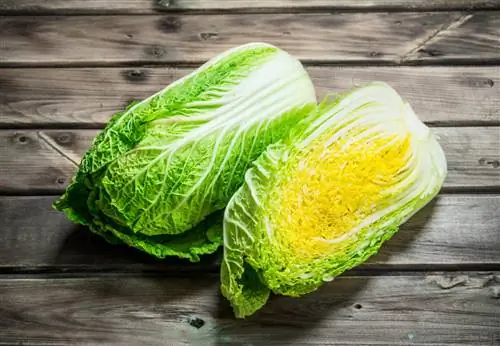- Author admin [email protected].
- Public 2023-12-16 16:46.
- Last modified 2025-06-01 06:02.
Cabbage flies are one of the most important pests of cruciferous plants such as rapeseed and cabbage. They can visit the home garden if they find suitable food plants for their larvae. Since control is difficult, you should prevent an infestation with appropriate measures.
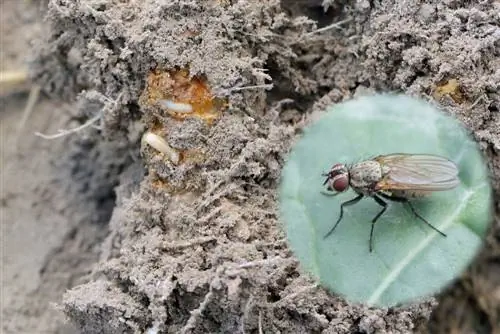
How can you prevent cabbage flies in the garden?
To prevent cabbage flies in the garden, thorough soil cultivation, mixed crops with tomatoes and celery, wood ash or rock dust, layers of mulch and cultural protection nets are recommended. Home remedies are often less effective, natural enemies such as ground beetles and parasitic wasps can help.
Can I fight cabbage flies with home remedies?
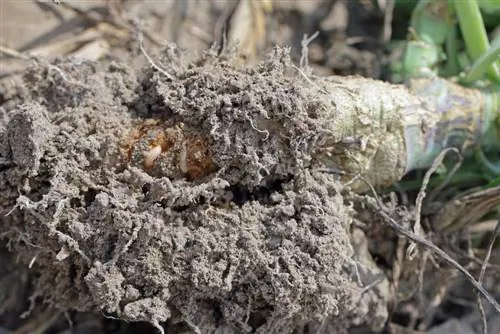
The infestation is usually only discovered when it is too late for treatment
If vegetables are infested with cabbage flies, you should dig up the affected plants and examine the extent of the damage. If the infestation is in the early stages, you can collect the maggots from the roots and replant the plant. If the stem tissue is already partially dead, the only solution is to completely dispose of the plant.
How to prevent further spread:
- no composting
- Compost offers cabbage fly larvae optimal living conditions
- Disposal of infected plant parts with household waste
Natural regulation by beneficial insects
The natural enemies of the small cabbage fly include predatory insects such as ground beetles and spiders. The short-winged beetles of the genus Aleochara parasitize the pupae of flower flies, while the parasitic wasp Trybliographa rapae hunts for larvae. It is therefore recommended to plant species-rich border biotopes to promote such beneficial insects.
Create border biotope
Sow the seed mixtures in autumn on a fine, crumbly seedbed. The seeds are lightly incorporated so that they are not covered by more than 1.5 centimeters of the substrate. Light and dark germinators find favorable germination conditions at this sowing depth. To increase the germination rate, you can press the seeds with a board. Avoid fertilizing to suppress unwanted and competitive weeds. In the first two years you should pull spontaneous weeds such as thistle, dock and couch grass.
Beneficial insects feel at home here:
- Mixture as 50 to 60 percent comb grass, common grass and upright brome
- maximum two percent legumes such as clover and vetch
- Common poppy, field delphinium, corn wheel and cornflower as strikingly flowering annuals
- biennial pioneer species such as evening primrose, wild carrot, viper's head and white campion
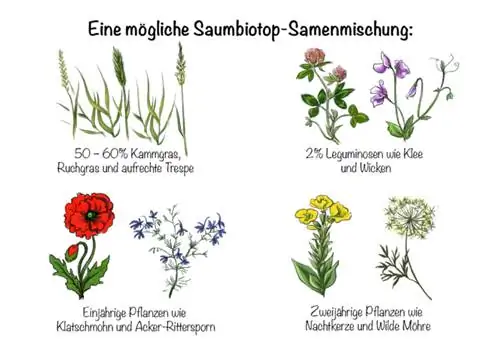
Do pesticides help?
Cabbage flies are among the mining insects. Their larvae feed into the plant tissue, where they are well protected from pesticides. Even in commercial horticulture, combating the plant pest is difficult because the larvae are not affected by the poisons.
How to recognize cabbage fly damage
In spring the infestation often extends beyond the edge rows. This first generation causes the most damage. Seedlings that grow between March and May until the first pair of leaves form are at risk. As the season progresses, the pests penetrate into the interior of the plants.
- Feeding passages in root neck, stems and cotyledons
- Food crumbs and feces in the corridors
- Plants wilt and rot

Affected plants
The maggots of cabbage flies cause damage to brassica plants that grow close to the ground. Cauliflower is particularly susceptible. The insects are considered dangerous pests of rapeseed. In the private garden they are guided by the seasonal availability of various food plants. While the first generation attacks fast-growing vegetables such as radishes from April onwards, the second generation prefers to feed on Chinese cabbage, but also radishes and kohlrabi in midsummer. In autumn, late-ripening species such as Brussels sprouts and turnips are on the menu of the third generation.
It is extremely difficult to control the mining cabbage fly larvae.
Background
This is how cabbage flies reproduce
Females orientate themselves using their senses. They use visual stimuli or scents to find a suitable place to lay their eggs. Squeezed turnip juice or the mustard oil glycoside sinigrin have a strong attractive effect. The female examines the potential food plant carefully, first crawling on the leaves and then down the stem to the ground. The eggs are laid on the root collar.
- oval eggs are about a millimeter long
- approx. 100 eggs are produced per female
- first maggots hatch after four to eight days
- bore into the root collar and penetrate to the root
- Feeding activity lasts three to four weeks
How to prevent an infestation
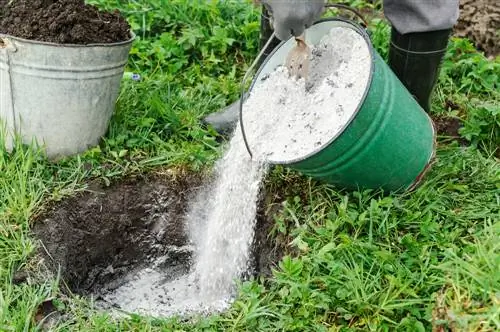
Wood ash spoils the appetite of cabbage flies
Since there are no pesticides for private use and the effectiveness of home remedies quickly reaches their limits, you should counteract the spread of the plant pest through optimal gardening. Thorough soil cultivation is mandatory before sowing. After the harvest, no stems or leaves should be left on the bed, as cabbage flies prefer to overwinter here.
- Early and late sowing avoids the peak flight time of flower flies
- Put wood ash in the planting hole and sprinkle it on the soil
- Sprinkle rock dust around the root neck
- Spread a layer of mulch made from fern leaves
- plant fertilizers increase the attractiveness of the soil for females
Ecological balance through mixed culture
An important measure to prevent pest infestation is mixed seeds in which opponents develop naturally. Tomatoes and celery are good partners for the cabbage family because their intense scent keeps cabbage flies at bay.
| suitable partners | unsuitable neighbors | |
|---|---|---|
| Raps | Clover, vetch, grain pea | Mustard |
| Radish | Carrot, parsley | Cucumbers, Chinese cabbage |
| Cauliflower | Phacelia, bush beans | Garlic, onions |
| Chinese cabbage | Spinach, beans, salad | Radish, radish |
| Kohlrabi | Borage, dill, leek, salsify | cabbage |
| Radish | Nasturtium, spinach, lettuce | Chinese cabbage, cucumbers |
Protecting crops with a net
Since cabbage flies get into a crop by flying in, a protective net (€960.00 on Amazon) is considered the safest method of warding off the pests. It should be particularly tightly meshed so that the flies, which can be up to five millimeters in size, cannot find access to the food plants. The culture protection nets ideally have a mesh size of 1.8 millimeters. They are stretched over the bed immediately after sowing susceptible species and remain there until harvest.
Tip
There are special cabbage collars that are placed around the stems of young plants. They prevent cabbage flies from laying their eggs on the root collar. The collars, made of felt or cardboard, are removed shortly before harvest and composted.
What types of cabbage flies are there?
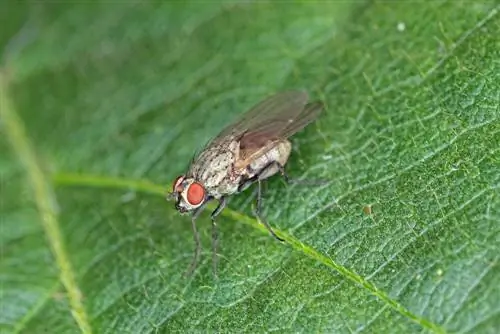
The small cabbage fly actually looks quite harmless
Cabbage flies belong to the genus Delia within the flower fly family. Well-known pests are small and large cabbage flies. While the small cabbage fly is active from April, the large cabbage fly (Delia floralis) only flies between August and September. It produces one generation per year and is therefore less harmful than the related species. Delia floralis mainly uses radishes and radishes as host plants.
Appearance
The small cabbage fly is reminiscent of a miniature version of the housefly. It grows up to five millimeters long and feeds on nectar and pollen. Their larvae develop near the roots. They are white in color, legless and headless. Their pupae appear brown and barrel-shaped. They can be found in the ground and are carried away by ants.
Tip
The predatory nematode species Steinernema feltiae is considered an effective regulator of root fly larvae. So far, however, the beneficial insect has hardly been used against cabbage flies.
Lifestyle
The first generation of the small cabbage fly hatches in spring. The chestnut blossom, which takes place in the Palatinate at the end of April, serves as a guide. In such mild regions, three to four generations can hatch per season. Egg development is favored by warm temperatures under foil and fleece.
- April: Egg laying
- May to June: Larvae hatch, eat and pupate after two to three weeks
- July: Egg laying
- July to August: Development of the second generation of maggots
- September: Egg laying
- September to October: Third generation larvae hatch and leave feeding damage until they pupate
Frequently asked questions
Are there white cabbage flies?
Adult cabbage flies are not white in color. Their appearance is reminiscent of the appearance of a housefly. Their larvae do not live under the leaves but in secret and are only visible when you pull infected plants out of the ground. If you spot whiteflies on the plants, they are probably whitefly.
Danger of confusion:
- Whiteflies: whiteflies on the underside of leaves, fly up when touched
- Cabbage white butterfly: first lays greenish and later yellow eggs on the underside of leaves
- Cabbage moth: green caterpillars eat leaves
- Mealy cabbage aphid: powdered aphids suck on undersides of leaves
Why do cabbage flies attack brassicas?
These insects have specialized in the cabbage family because here they compete with a few food specialists. Many cruciferous vegetables contain mustard oil glycosides, which have antibacterial and antimicrobial effects. This protects plants from potential predators, but cabbage flies can digest the substances.
What damage can cabbage flies cause?
Because of its high reproduction rate and rapid development, the small cabbage fly is considered one of the most dangerous pests of rapeseed. It is capable of completely destroying a crop. Since the flies are extremely mobile, they are hardly affected by insecticides. Their larvae develop protected in the root tissue. Since the largest plants are more severely infested than weaker developed plants, early sowings are more infested than late sowings.
Do plant sprays made from garlic or nettle help against cabbage flies?
Plant decoctions are used to strengthen weakened plants. Since cabbage fly larvae prefer to bore into vigorously growing plants, homemade manure does not provide reliable protection against infestation. Because of their intense smell, brews can be administered as a supportive measure.

